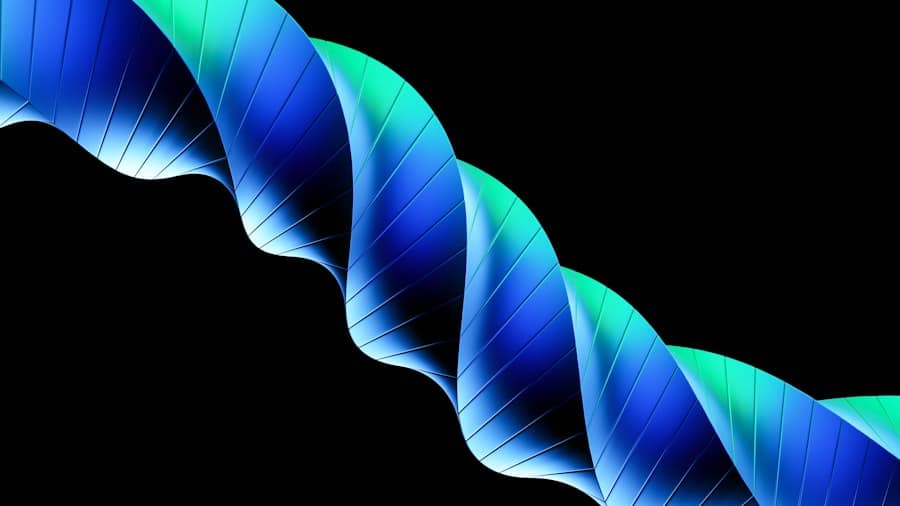The advent of 3D printing technology has revolutionized numerous industries, and its application in space exploration is no exception. As humanity sets its sights on deeper space missions, the need for innovative solutions to overcome the challenges of long-duration space travel becomes increasingly critical. Traditional manufacturing methods are often impractical in the harsh environments of space, where transporting materials from Earth is costly and time-consuming.
3D printing, or additive manufacturing, offers a promising alternative by enabling the on-demand production of components and tools directly in space. This capability not only reduces the need for extensive supply missions but also allows for rapid prototyping and customization of parts tailored to specific mission requirements. The integration of 3D printing into space exploration is not merely a theoretical concept; it has already begun to take shape through various initiatives by space agencies and private companies.
NASA, for instance, has been at the forefront of this technological advancement, conducting experiments aboard the International Space Station (ISS) to assess the feasibility and reliability of 3D-printed components in microgravity. The potential for 3D printing to enhance the efficiency and sustainability of space missions is immense, paving the way for a new era of exploration that could see humans living and working on other planets.
Key Takeaways
- 3D printing has revolutionized space exploration by enabling the production of tools, equipment, and even habitats in space.
- The benefits of 3D printing in space technology include reduced costs, faster production, and the ability to create complex and customized designs.
- 3D printing is used for spacecraft and satellite components, allowing for on-demand production and replacement of parts in space.
- Astronauts can use 3D printing to create tools and equipment on-demand, reducing the need for extensive pre-mission planning and storage.
- The future of 3D printing in space exploration holds potential for habitat construction on other planets, enabling sustainable human presence beyond Earth.
The Benefits of 3D Printing in Space Technology
Reducing Logistical Challenges
One of the most significant advantages of 3D printing in space technology is its ability to reduce logistical challenges associated with transporting materials from Earth. Traditional manufacturing processes require extensive supply chains and inventory management, which can be cumbersome and expensive when dealing with the unique demands of space missions. By utilizing 3D printing, astronauts can produce necessary components on-site, minimizing the need for pre-launch inventory and allowing for a more flexible approach to mission planning.
Enabling Rapid Prototyping and Innovation
This capability is particularly crucial for long-duration missions, such as those planned for Mars, where resupply options are limited. Moreover, 3D printing facilitates rapid prototyping, enabling engineers and scientists to iterate designs quickly and efficiently. In a field where innovation is paramount, the ability to test and refine components in real-time can lead to significant advancements in technology.
Enhancing Mission Success and Autonomy
For example, if a spacecraft encounters an unexpected issue during a mission, astronauts can design and print a replacement part on-demand rather than waiting for a resupply mission from Earth. This adaptability not only enhances mission success rates but also empowers astronauts with greater autonomy in problem-solving.
3D Printing for Spacecraft and Satellite Components
The application of 3D printing extends to the production of spacecraft and satellite components, where precision and reliability are paramount. Traditional manufacturing methods often involve complex assembly processes that can introduce points of failure. In contrast, 3D printing allows for the creation of intricate geometries that are difficult or impossible to achieve through conventional means.
For instance, components such as fuel nozzles or heat exchangers can be designed with optimized flow paths that enhance performance while reducing weight. NASA’s use of 3D printing has led to the successful production of various spacecraft components, including rocket engine parts. The agency’s Marshall Space Flight Center has developed a method for 3D printing rocket engine injectors using advanced materials that can withstand extreme temperatures and pressures.
This innovation not only streamlines the manufacturing process but also results in lighter components that contribute to overall vehicle efficiency. The ability to produce these critical parts on-demand could significantly reduce lead times and costs associated with spacecraft development.
3D Printing for Astronaut Tools and Equipment
In addition to structural components, 3D printing plays a vital role in creating tools and equipment for astronauts. The unique environment of space presents challenges that require specialized tools tailored to specific tasks. With 3D printing, astronauts can fabricate tools as needed, ensuring they have the right equipment for any situation that may arise during their missions.
This capability is particularly beneficial in emergency scenarios where quick access to tools can be crucial. For example, during a mission aboard the ISS, astronauts have successfully printed various tools, including wrenches and brackets, using a 3D printer. These tools were designed based on immediate needs, demonstrating the flexibility of additive manufacturing in addressing unforeseen challenges.
Furthermore, the ability to customize tools for individual astronauts enhances usability and ergonomics, allowing crew members to work more efficiently in microgravity conditions.
3D Printing for Habitat Construction on Other Planets
As humanity prepares for potential colonization of other planets, such as Mars or the Moon, 3D printing emerges as a key technology for habitat construction. The logistics of transporting building materials across vast distances make traditional construction methods impractical for extraterrestrial environments. Instead, 3D printing offers a solution by enabling the use of local resources—such as regolith or lunar soil—to create habitats that can support human life.
NASA’s Artemis program aims to establish a sustainable human presence on the Moon by utilizing in-situ resource utilization (ISRU) techniques. This approach involves using materials found on the lunar surface to construct habitats and infrastructure. By employing 3D printing technology, future lunar bases could be built using lunar regolith as a primary material, significantly reducing the need for supplies sent from Earth.
This not only lowers costs but also enhances sustainability by minimizing waste and maximizing resource efficiency.
The Future of 3D Printing in Space Exploration
Looking ahead, the future of 3D printing in space exploration appears promising as advancements in technology continue to unfold. Research is ongoing into new materials that can withstand the harsh conditions of space while maintaining structural integrity. Innovations such as bioprinting—where living cells are printed to create biological structures—could revolutionize how we approach medical care in space by enabling astronauts to produce tissues or even organs if needed.
Moreover, as private companies increasingly enter the space industry, competition will likely drive further innovation in 3D printing technologies. Companies like SpaceX and Blue Origin are already exploring ways to integrate additive manufacturing into their spacecraft designs. As these technologies mature, we may see entirely new spacecraft architectures that leverage the unique capabilities of 3D printing, leading to more efficient designs and enhanced mission capabilities.
Challenges and Limitations of 3D Printing in Space
Despite its many advantages, 3D printing in space is not without challenges and limitations. One significant hurdle is ensuring the reliability and quality of printed components under microgravity conditions.
Rigorous testing protocols must be established to validate the performance of 3D-printed parts before they are deployed in critical applications. Additionally, while 3D printing can reduce reliance on Earth-based supplies, it does not eliminate all logistical challenges. The printers themselves require maintenance and power, which must be factored into mission planning.
Furthermore, there is a need for skilled personnel who can operate and troubleshoot these advanced machines in space environments. Training astronauts to effectively use 3D printers adds another layer of complexity to mission preparation.
The Impact of 3D Printing on Advancing Space Exploration Technology
The impact of 3D printing on advancing space exploration technology cannot be overstated. By enabling on-demand production of components, tools, and habitats, this innovative technology addresses many logistical challenges associated with long-duration missions beyond Earth. As we continue to push the boundaries of exploration into deeper space, the ability to manufacture essential items directly on-site will be crucial for mission success.
As research progresses and new materials are developed, we can expect even greater integration of 3D printing into future space missions. The potential applications are vast—from creating complex spacecraft components to constructing habitats on other planets—each contributing to a more sustainable and efficient approach to exploration. Ultimately, 3D printing stands as a testament to human ingenuity and adaptability in our quest to explore the cosmos.
In a recent article discussing the advancements in technology, particularly in the field of 3D printing, it is fascinating to see how this innovation is revolutionizing space exploration. The Role of 3D Printing in Advancing Space Exploration Technology highlights the importance of this technology in creating tools and parts for spacecraft and habitats. For those interested in exploring more about cutting-edge technology, the article on the Best Software for 3D Animation here provides valuable insights into the tools used to create stunning visual effects in various industries.
FAQs
What is 3D printing?
3D printing, also known as additive manufacturing, is a process of creating three-dimensional objects by layering materials based on a digital model.
How is 3D printing used in space exploration technology?
3D printing is used in space exploration technology to create parts and tools on demand, reducing the need to carry spare parts and minimizing the cost of launching materials into space.
What are the benefits of using 3D printing in space exploration?
The benefits of using 3D printing in space exploration include reduced costs, increased efficiency, and the ability to create complex and customized parts that are difficult to produce using traditional manufacturing methods.
What materials can be used in 3D printing for space exploration?
Materials commonly used in 3D printing for space exploration include plastics, metals, ceramics, and composites. Researchers are also exploring the use of regolith (lunar or Martian soil) as a potential material for 3D printing in space.
What are some examples of 3D printing applications in space exploration?
Some examples of 3D printing applications in space exploration include the production of rocket engine components, tools for astronauts, habitat structures, and even food for long-duration space missions.
How does 3D printing contribute to sustainability in space exploration?
3D printing contributes to sustainability in space exploration by enabling the recycling of materials and the production of spare parts and tools on-site, reducing the need for resupply missions from Earth.
What are the challenges of using 3D printing in space exploration?
Challenges of using 3D printing in space exploration include the development of reliable and durable printing technologies for the harsh conditions of space, as well as the need to optimize printing processes for limited resources such as power and raw materials.



